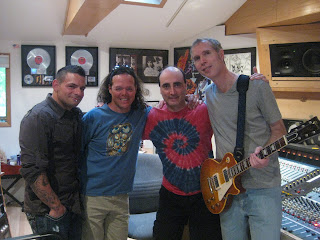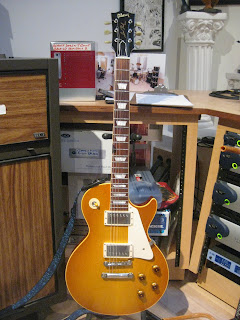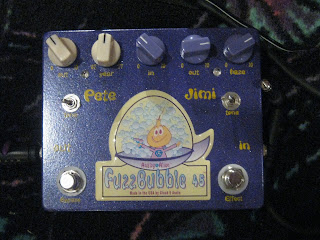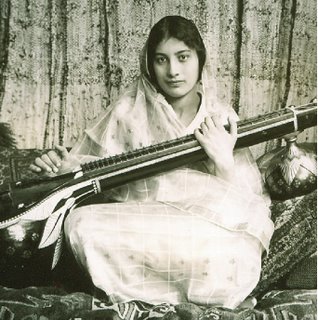"Life is about rhythm. We vibrate, our hearts are pumping blood, we are a rhythm machine, that's what we are." - Mickey Hart (Grateful Dead)
 |
| Al Improta, Joe Chirco, Joe Napoli & I at Cloud9 Recording |
The components of music are melody, harmony, and rhythm. Rhythm is the cornerstone. Rhythm is the foundation. If the rhythm section of a band is not rocking, grooving, or swinging, there is no music happening. Like Duke Ellington said, "It don't mean a thing, if it ain't got that swing". This is why the rhythm tracks for a song are so important. If they aren't happening, it really doesn't matter what you play or sing on top of them. The song will be lifeless.
I was back at Cloud9 Recording on September 6th to finish recording rhythm tracks for my upcoming CD. Joe Chirco was back playing drums, Al Improta was back playing bass, and I was playing guitar. The session goal was to complete the remaining four songs, and I had selected a fifth song to try if we had time. At the end of the day we had completed the rhythm tracks for all five songs. All nine songs for the next CD are now ready for vocals, additional guitars, and keyboards where needed. Throughout these early sessions I've been pleased to note that after every take we have always been in agreement regarding the quality of what we just played. We all knew if it was THE take, and if it was not THE take we all knew what needed attention. Musicians have egos like everyone else, so it is always a treat to work with players who consistently put the music first. In this case not only were we putting the music first, but we all seemed to be recognizing where it needed to go, and doing our best to get it there.
The primary guitar for today's rhythm tracks was the 1958 Gibson Les Paul Historic Re-issue that I also played on "Follow the Money" and "Nobody's Friend". The amp I used was the 1960's Fender Vibrolux that was also used on those songs. Aside from one exception that I will elaborate on later, I did not use any effects pedals. In case I haven't mentioned it yet, most of the guitars and all of the amps used for this project are from the Cloud9 collection.
 |
| 1958 Gibson Les Paul Historic Re-issue |
First up was "Another Wasted Day". This is probably the most straight-forward song on the entire project. It is a little over 3 minutes long and is the only song on the CD with no guitar solos. The challenge here was settling on the tempo, where small variations could make the song sound rushed or dragging. After a few takes we nailed it and were ready to proceed to the next song.
"Sacred Place" is a song I had recorded a few years ago. I liked that performance, but not the recording quality. I also think "Sacred Place" will be a strong song to play live; it has a ragged Stones or Crazy Horse feel about it. I also thought it fit in well with the rest of the new material. I experimented with a new stomp box from Cloud9 Audio for the rhythm guitar track, as I wanted the guitar to sound a bit grittier than the Vibrolux was providing. Rather than switch to a different amp, Jack Napoli suggested trying out this distortion/overdrive pedal he recently designed. The pedal is actually two pedals in one. One function allows you to set an overdrive that is similar to Pete Townshend's sound in The Who, and you can vary it from his late 60's sound to his 70's sound. The other pedal function is more of a fuzz, and this is designed to sound like the Hendrix sound, and can also be varied from a soft break up to singing, gobs of sustain, heavy fuzz. The Townshend overdrive with a mid setting was perfect for the sound I was after. Thankfully my guitar retained its sound and expressiveness with this pedal. Many guitar pedals are personality vacuums - everything sounds the same coming out of them. I really liked that the guitar and amp retained their characters with this pedal - with the setting I used it was almost as if the amp had an extra pre-amp gain that I turned up. It sounded that natural.
 |
| The FuzzBubble guitar pedal from Cloud9 Audio |
"A Girl of Nineteen" was up next. This has a 6/8 feel and like "Another Wasted Day", tempo is critical. It doesn't exactly feel like a rock song, or a jazz song, or an R&B song - and that is where musicians like Joe & Al really shine. Rather than force it into a standard groove, they found the song's unique pulse and amplified it. Joe did a great job varying dynamics to contrast the verse & chorus, and Al played some very melodic fretless bass. I started out playing the Les Paul, but after two takes switched to a Gibson ES-225. The 225 was a better fit for the song. Once again, after a few takes we had a great performance. I decided to extend the ending of the song before we did the final take. There is a dreamy improv that I think will be effective following the last lyric. Another great thing about working with musicians like Joe and Al is they are both great listeners. I mean that both as players and as people who are alert in the moment. Not only were we always listening and responding to each others playing but anytime a musical suggestion was made, "Lets extend that ending a bit" or "Lets bring the volume down for the last verse only" or "How about adding another measure to end and do a ritard on the intro phrase", EVERYONE would nail the suggestion on the next take. We recorded a fine performance of "A Girl of Nineteen".
I knew "Rise and Shine" would be challenging. The verses need to be slightly slower then the choruses, and they vary dynamically as well as with tempo. The verses of the song are mainly acoustic guitar and voice, the full band kicks in on the chorus. Al again played some very soulful fretless bass, conjuring the ghost of Jaco as he accompanied the acoustic guitar and lead vocal in the second verse. Joe Napoli worked his magic with Pro Tools, making sure the song's different sections segued nicely. Once again, the final performance was excellent.
The fifth song I had selected, "Sympathetic", was what I consider a straight-forward groove song - no breaks, no weird changes, just get into a groove, follow the chords and play. Joe and Al were ready to give it a try before ending the day so we played it down twice. Both were good takes, but the second take was better. This is the kind of song where the groove itself just makes me feel good. Its going to be fun to play a guitar solo on this. For the rhythm track I played Jack Napoli's Taylor acoustic plugged into the Vibrolux amp. It sounded quite good, so it may be a keeper; but I will probably record another acoustic rhythm track with my Lowden as well.
It was a very successful session. I'll write again as the sessions continue with vocals & additional instrumental overdubs.









